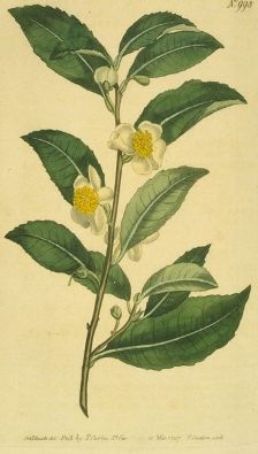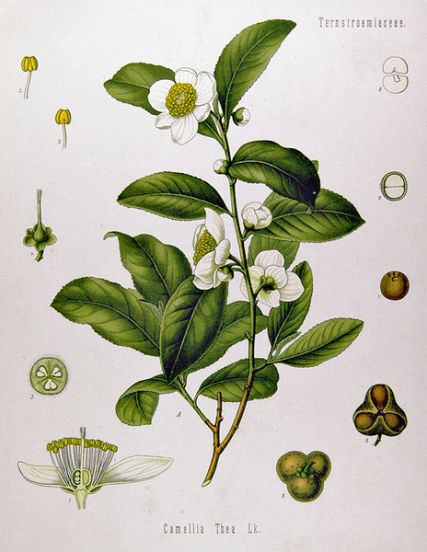Camellia sinensis
Tea Plant
Life History and Reproduction
Like all plants,
Camellia
sinensis undergoes an alterati on of
generations. In tea plants, the sporophyte - diploid - is the dominant
stage in Camellia sinensis’
life
cycle and the gametophytes - haploid -
are the minor stage. Through meiosis, a sporophyte creates a gametophyte.
Gametophytes will fuse via cross
pollination where wind or an
on of
generations. In tea plants, the sporophyte - diploid - is the dominant
stage in Camellia sinensis’
life
cycle and the gametophytes - haploid -
are the minor stage. Through meiosis, a sporophyte creates a gametophyte.
Gametophytes will fuse via cross
pollination where wind or an
Camellia sinensis
is a shrub that can reach up to thirty feet in height. The leaves on the plant are evergreen and during the ad ult stage, the leaves become dark green,
leathery, and very smooth. These leaves
can grow to be about one to twelve
inches in length; furthermore, the
flower buds can grow in clusters or
singles on the leaf axils. These buds
resemble a flower’s bud because they are
spherical
and they dangle off the plant's
stem. Camellia sinensis' leaves
are brownish green and are
four lobed with one to three dark brown
seeds inside each leaf. The seeds
the plant produces
stay
dormant until the time is right for them
to sprout. When the surroundings
are suitable, the seed will go through mitosis
and it will eventually reach adulthood.
ult stage, the leaves become dark green,
leathery, and very smooth. These leaves
can grow to be about one to twelve
inches in length; furthermore, the
flower buds can grow in clusters or
singles on the leaf axils. These buds
resemble a flower’s bud because they are
spherical
and they dangle off the plant's
stem. Camellia sinensis' leaves
are brownish green and are
four lobed with one to three dark brown
seeds inside each leaf. The seeds
the plant produces
stay
dormant until the time is right for them
to sprout. When the surroundings
are suitable, the seed will go through mitosis
and it will eventually reach adulthood.
With the knowledge of how C. sinensis lives and reproduces, let us learn about its Habitat and Geography.
Copyright © 2007, Design by: Sunlight webdesign